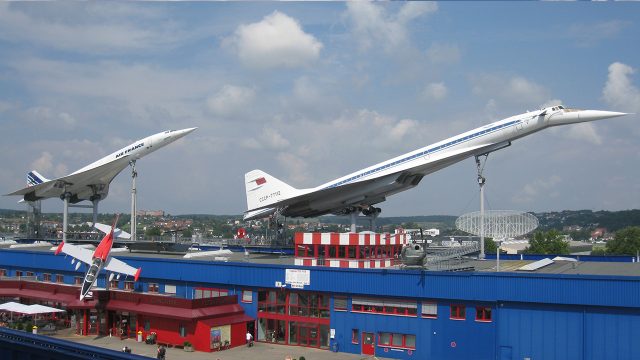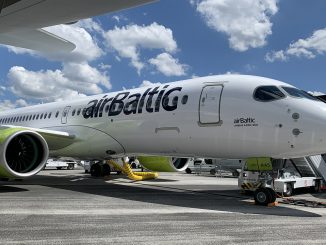
31st December 2018 marks the 50th anniversary of the first flight of the Soviet supersonic airliner, the Tupolev Tu-144.
Supersonic Race
In one of the greatest examples of Cold War rivalry mixed with industrial espionage, the Tupolev Tu-144 was the Soviet Union’s answer to the world’s quest for supersonic passenger transport in the 1960s. The Supersonic Race was run by three projects. The UK and France were developing Concorde, Boeing in the US was working on a project named the 2707 SST and Tupolev of the Soviet Union had the Tu-144.
On paper, The Boeing 2707 SST was to be the winner. It would carry the most passengers (277) at the highest speed over the longest range. It also looked the most unique, featuring a conventional tailplane along with a large delta wing.
Suspiciously, however, Concorde and the Tu-144 looked remarkably alike. This was the result of well known (but obviously undocumented) industrial espionage from both sides. The four nations were disparate to win the Supersonic Race, and the Soviet Union won the first victory.
The Tupolev Tu-144, or ‘Concordski’ as the aircraft was affectionately nicknamed by the West, was the first to perform its maiden flight. Two months and one day before Concorde, the Tu-144 took to the skies for a successful first flight. The 144 was also the first to fly Supersonic. It was therefore the first ever airliner to officially travel faster than the speed of sound. The Tupolev was larger than Concorde, carrying more passengers (140 to Concorde’s ~100), and was also marginally faster, flying at Mach 2.15 compared to Concorde’s Mach 2.04.

Fate
Russia’s Tu-144 was fraught with mechanical problems from the beginning, with Tupolev even reaching out to the West for help with the project. In 1973, a Tu-144 crashed during a public demonstration flight at the Paris Air Show. ‘Excessive’ manoeuvres stressed the airframe to a point where it broke apart in mid air. The crash killed all six on board and eight people on the ground. From its entry to service on 1st November 1977 until its retirement from passenger service on 1st June 1978, the Tu-144 flew only 55 scheduled passenger flights.
While ‘Concordski’ did see airline service on domestic flights in the Soviet Union with Aeroflot, Concorde entered service before the Tu-144 and went on to be the only successful Supersonic airliner, operating 27 years for Air France and British Airways. Of the 16 Tu-144s built, those that survived can be seen in Museums.
It could be argued that while Concorde won the Supersonic battle, Boeing won the passenger jet war. After building just a single wooden mock-up of the 2707 SST, Boeing cancelled the project to focus on the 747 programme. In a cruel twist of fate, supersonic transport was ultimately unsuccessful. Instead, the 747 went on to ‘rule the skies’, and made flying, especially longer distances, accessible to the masses.
Read more: Concorde last flew passengers 15 years ago
Matt is a Berlin-based writer and reporter for International Flight Network. Originally from London, he has been involved in aviation from a very young age and has a particular focus on aircraft safety, accidents and technical details.



